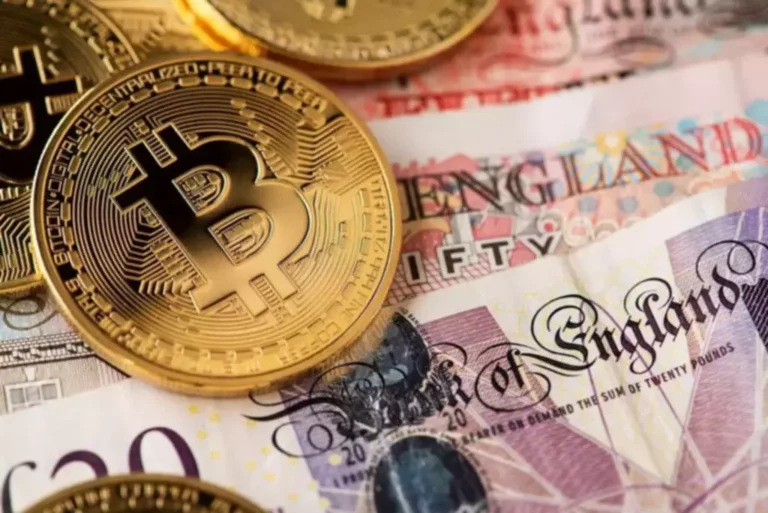Трейдер обязан купить базовый актив до или в день исполнения опциона. Он получит премию и прибыль, если котировки пойдут вниз, и убыток, если цена базового актива упадет. Трейдер обязан продать базовый актив по фиксированной цене до или в день исполнения опциона. Он получит премию и прибыль, dowmarkets если котировки пойдут вниз, и убыток, если цена базового актива вырастет. По ней покупатель опциона имеет право, а продавец обязан купить или продать базовый актив. Книга лишена даже намека на академизм — автор просто делится своим опытом и строит диалог с читателем на равных.
- С последними минимум проблем по оформлению плюс налоговое резидентство, а с европейскими у нас совпадают торговые часы.
- Разные облигации выплачиваются в разные месяцы, так что здесь, как и с акциями, можно собрать портфель, который будет приносить более-менее равномерный доход в течение года.
- Однако попытка быстро разбогатеть на инвестициях — ошибка.
- Тем не менее новичок найдет в этой книге массу полезного.
- Чтобы получать с дивидендов приличную сумму каждый месяц, нужно собрать очень большой пакет акций и потратить на него миллионы рублей, если не больше.
Руководитель аналитического центра Санкт-Петербургской биржи Павел Пахомов также советует не ограничиваться учебниками. В биржевой торговле более важна не теоретическая подготовка, а психология инвестора, говорит он, поэтому книги, описывающие интересные ситуации и поведение людей на рынке, будут полезны. В качестве примера Пахомов приводит книгу «Вышел хеджер из тумана» Бартона Биггса. Читатели могут узнать, зачем нужен личный финансовый план, как торговать на бирже через брокера и что может рассказать инвестору отчетность американских компаний. Последние два года ЦБ, Московская биржа и брокерские компании пытаются повысить популярность частных инвестиций в России. На этой волне многие книгоиздатели вновь предлагают различные книги, посвященные основам торговли на фондовом рынке и инвестициям в ценные бумаги.
Как начать торговать на бирже. Инструкция для начинающих трейдеров
Зарегались в Одноклассниках — получится и у брокера. Шаблон везде один — тыркаешь по кнопке регистрации и заполняешь анкету с именем, фамилией и прочим. В ней могут участвовать как активные, так и пассивные инвесторы. Первые самостоятельно подбирают акции и облигации путем анализа эмитентов, чтения экономических и политических новостей. Зарабатывают на росте активов, когда “купил дешево, продал дорого”. Но удачного закрытия сделки могут ждать и несколько дней, и несколько месяцев.
Таким образом, одни действия позволяют получить прибыль, другие — минимизировать убытки. Но правильность и своевременность принятия решения зависит от постоянного мониторинга рынка и следования своей стратегии. Полная информация по опциону содержится в карточке конкретного актива.
Являясь частью анализа графических паттернов, они используются трейдерами для обозначения ценовых барьеров на графиках. В канун выхода важных новостей брокер может расширять спред, который может сожрать солидный кусок нашей прибыли. Поэтому выбирая новостную стратегию в качестве основы, нужно выбирать тип счета с фиксированными комиссиями. Эта стратегия торговли предполагает использование технических индикаторов, чтобы спрогнозировать движение рынка. Он основан на постулате о цикличности рынков, поэтому, анализируя прошлые тренды и движения цен, трейдер может прогнозировать, что произойдет в будущем.
Открытие реального торгового счета
Этот учебник претендует на статус настольной книги для всех, кто интересуется инвестициями в американские ценные бумаги. В рамках первых шагов на рынке рекомендуем не пренебрегать демо-торговлей. Даже если средства позволяют вам потратить значимую сумму на получение опыта и тестирование различных стратегий, уровни поддержки и сопротивления есть ряд нюансов, которые не требуют материальных затрат. В основе данной книги лежит история управления фондом длинной в 13 лет, автор повествования остроумно и увлекательно описывает как зарабатывать деньги на фондовом рынке. Книга является дополненным изданием финансового бестселлера.
Торговля на бирже с применением паттернов
Поэтому при отсутствии элементарных знаний в области мани менеджмента можно быстрее загубить свой депозит. Если риски соблюдать, то само по себе кредитное плечо особой роли не играет. Купоны, как и дивиденды, выплачиваются в установленные дни. Российские ОФЗ обычно выплачивают купоны раз в полгода. Разные облигации выплачиваются в разные месяцы, так что здесь, как и с акциями, можно собрать портфель, который будет приносить более-менее равномерный доход в течение года.
Как торговать на фондовой бирже?
Есть два спонсора успеха в трейдинге — практика и образование. Поэтому важно, чтобы новичку был доступен демо-счет и качественные образовательные материалы по биржам и торговле. Многие новички попадают на биржу буквально с грошами.
Сколько можно проиграть на бирже или почему не стоит сразу вкладывать в торговлю большие суммы
Фондовая биржа NASDAQ (National Associations of Securities Dealers Automate Quotations) – одна из крупнейших бирж в мире. Она специализируется на IT и Hi-Tech, что и обеспечило ей высокую популярность у трейдеров, ведь рынок информационных технологий стремительно развивается уже не первый год. NASDAQ занимает второе место по капитализации компаний (первое место занимает NYSE, третье — Лондонская биржа LSE). Выбрав актив и площадку, трейдер должен найти для себя брокера. Брокер — это финансовая компания, которая будет выполнять роль посредника между трейдером и биржей.
Производные — это торгуемые продукты, основанные на базовом рынке. Производные могут базироваться на чем угодно, включая отдельные акции, фондовые индексы (такие как фондовый индекс S & P 500), валюты, сырье, товары и пр. Трейдеры тоже пасутся здесь, продавая и покупая акции, чтобы заработать на разнице в ценах.
Авторы расшифровывают для читателя такие термины, как роуд-шоу, IPO, скальпинг, маржин-колл и прочую трейдерскую лексику, которая неизменно пугает новичков. Но стоит отметить и тот факт, что волатильность что можно приобрести на бирже на фьючерсах больше чем на акциях и на них больше крупных игроков. Очень часто фьючерсы хуже держат уровни, чем те же акции. Также на рынке фьючерсов брокеры дают большие плечи.
В его основе лежит базовый актив, от цены которого зависит цена опциона. Инвестор покупает или продает не сам актив, а заключает контракт на право или обязанность купить или продать актив в будущем. Опционы для начинающих инвесторов являются рискованным инструментом, поэтому перед тем, как совершать с ним сделки важно понять принцип его работы. Самый верный путь к успеху – это изучение рынка и доступных инструментов, разработка собственной стратегии и тактики, отключение эмоций и дисциплина. Для “чайников” есть прекрасная возможность у любого брокера попробовать торговать на бирже без вложений собственных денег, на демо-счетах.
Изучение механизма торговли, установленной с помощью брокера торговой платформы, психологии торгов. Анализ рынка выбранных активов и эмитентов, их выпускающих. Гендиректор консультационного центра БКС Виктор Романовский советует читать «Секреты биржевой торговли» Владимира Твардовского и Сергея Паршикова. Несмотря на название, эта книга адресована начинающим инвесторам, поскольку там говорится не только о методах технического анализа, но и о функционировании рынка, говорит Романовский.
За основу трилогии взята реальная история о карьере финансиста, который построил систему городского железнодорожного транспорта. В романах «Финансист», «Титан», «Стоик» повествуется о бизнесе, аферах и махинациях на финансовых рынках, а также реалиях жизни олигархов. Условия обслуживания могут быть изменены брокером в одностороннем порядке в любое время в соответствии с условиями
регламента брокерского обслуживания. Опцион отличается от фьючерса — еще одного дериватива на срочном рынке.
Хотя, торгуя на бирже уже более 2 лет, могу с уверенностью сказать, что в перспективе это выгодно. Главное — иметь хорошую стратегию входа и выхода и управлять рисками. Торговый план отличается от торговой стратегии. Последняя отвечает только за то, как мы должны входить и выходить из сделок на бирже. Проще говоря, сперва я смотрю рейтинги, потом прицельно гуглю, уже выбрав пару-тройку достойных кандидатов, начинаю сравнивать торговые условия. Просто разуйте глаза и не забудьте, что сказано выше об индивидуальных торговых условиях на бирже.
Ну вы же не станете делать операцию вместо врача, если никогда на него не учились? Кроме того, он рекомендует «Малую энциклопедию трейдера» Эрика Наймана. «Автор подробно объясняет, как торговать, в какой ситуации покупать разные инструменты, объясняет азы технического анализа. Ее можно читать неподготовленному человеку», — соглашается финансовый советник «Алор Брокер» Сергей Королев. Раздел «Теория» подготовлен профессором НИУ «Высшая школа экономики» Тамарой Тепловой. По сути, это история американского фондового рынка с момента зарождения и до наших дней, подкрепленная описанием финансовых инструментов и особенностями биржевого регулирования в США.
«ПРОДАЖА» — цена, по которой продавцы готовы продать опцион прямо сейчас. Это премия, которую получит продавец, если сделка с базовым активом не состоится. Расчетная цена — теоретическая цена с учетом волатильности актива на рынке. «СТРАЙК» — это цена базового актива, которая фиксируется в контракте. IV — это внутренняя стоимость опциона, определяется как разность между текущей ценой базового актива и страйком. Среди сильных сторон этой книги — объяснение сложных финансовых понятий максимально доступным языком.



